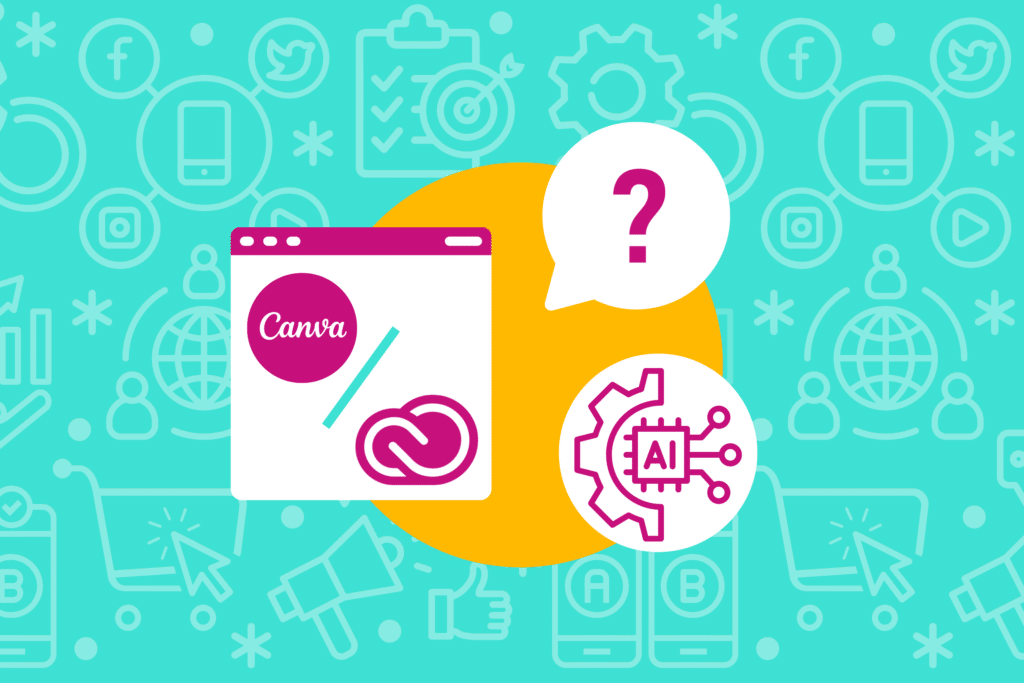Have you been running campaigns on Meta Ads for your eCommerce brand over the past few years? If so, chances are you’ve been following all the rules: Ads are on-brand, optimized for mobile, feature clear calls-to-action, and include eye-catching visuals. On the surface, these ads should be paving the way to boost your business’s profitability. But there’s only one problem—your Meta Ads’ performance is declining.
You started to notice this decline in engagement around a month ago, but it didn’t worry you too much. Now the problem has become more serious as you’re receiving fewer engagements, comments, and conversions. With a new product launch on the horizon, you’re eager to improve your ad performance on Meta. So, where do you go from here to properly manage your Facebook account?
In this blog post, we’ll discuss how to identify when your ads aren’t performing well, some steps to learn how to run Facebook ads effectively, and explain how improving ad performance on Meta can boost your brand’s profitability.
Effectively Manage Your Facebook Account: Identify Underperforming Ads
Though you may have suspicions about your ads’ effectiveness, identifying which are truly underperforming may be the key to steering your business toward success and ensuring your products reach the right customers. But is there a definitive way to accurately pinpoint ads that fall short of expectations? Let’s talk about it.
Imagine you’re an eCommerce brand that sells motorcycle accessories. One of your recent ad campaigns for helmets, riding boots, and gloves isn’t getting as much traction as you anticipated. In this campaign, your ad placements appeared on the Facebook Feed and Marketplace, but conversions were low. Could this mean your ads aren’t doing well? Yes. But as you learn how to run Facebook ads, it’s important to take a holistic view and monitor the following key performance metrics:
- Click-through rate (CTR) measures how many shoppers click on your ad after seeing it. A higher CTR means more people are engaging with your ad (which is usually a good sign that your ad is resonating with shoppers), while a lower CTR means your intended audience may not be connecting with your ads.
- Cost-per-click (CPC) identifies the average cost each time a link is clicked. In general, the more people who click through your ad, the lower CPC you’ll see and the more cost effective your campaign will be. A higher CPC is indicative of a low CTR, which means you’re not reaching the right audience and/or have poor ad creative—thus indicating that you need to optimize your campaign.
- Conversion rate (CVR) measures the percentage of users who complete a desired action (like making a purchase) from your campaign. A high CVR may suggest that your campaign is built well and effective, while a low conversion rate may indicate the ads aren’t doing their job in persuading your audience to take action.
- Cost-per-action (CPA) is a mobile ad budgeting model that allows marketers to pay the ad or media channel each time a specific action is taken after clicking on an in-app ad. CPA is a predetermined price. In the Facebook mobile app, for example, an advertiser may pay Meta each time a person submits a Facebook Leads form. This metric is an important indicator of ad performance and allows marketers to only pay for what they’re after (i.e. people taking the specific action). It’s become increasingly popular for mobile advertising because marketers can easily budget for each campaign’s CPA.
- Return on ad spend (ROAS) calculates the amount of money your company earns from each dollar spent on advertising. It’s often shown as a ratio (like 5:1), meaning $5 in revenue is generated for every $1 spent. For eCommerce brands, the average expected ROAS from efficient ad campaigns varies by platform and industry; but—like other similar advertising metrics—a lower ROAS may suggest inefficient campaigns, while a higher ROAS indicates high-performing ads.
- Contribution margin is a measure of profit as a percentage of revenue. Our digital marketing agency uses this metric as our main KPI for all channels we manage, as we believe it’s the most important indicator of campaign efficiency and success. Learn all about contribution margin in this blog post.
These metrics are just a starting point; there are many more measures of success that should be pulled and analyzed to best understand your paid social performance. For even more tips on how to manage your Facebook account and understand how Facebook metrics influence your paid social media campaigns, check out our blog post: How to Influence Facebook Metrics.
How to Run Facebook Ads: Optimize Performance with These Steps
Success with Facebook (Meta) Ads requires more effort than just throwing a few branded graphics on the platform and hoping for the best. We’ll dive into some strategies you can leverage to learn how to run Facebook ads and achieve better performance.
Step 1: Expand your ad placements beyond just the standard Facebook Feed. Consider other placements (including those on Instagram) that will help you reach a wider audience. Plus, broadening ad placement may increase visibility without impacting overall ad spend. You can place ads on the following areas in Meta:
- Facebook/Instagram Feeds
- Facebook/Instagram Stories & Reels
- Facebook Marketplace/Instagram Shop
- Facebook video feeds
- Facebook right column
- Messenger inbox
- Audience Network
- …and many more!
Step 2: Review your ad targeting parameters to ensure they accurately reflect your brand’s ideal customer profile and buyer personas. To yield the best results, you should experiment with different audience segments, demographics, interests, and behaviors. If you use Meta Advantage+ Shopping campaigns, you can now easily report on your most engaged prospects using the Engaged Customers Audience Segment, which will help you better understand how your campaigns resonate with your custom audiences.
Step 3: Test various ad formats to give yourself an idea of what speaks to your target audience the most. Experiment with carousel ads, static ads, video ads, and more. This approach provides unique ways to connect with your audience, which can lead to higher engagement rates, increased brand awareness, and—ultimately—better profitability.
Step 4: Strategically manage your budget based on your specific business objectives or KPIs, audience size, competition, and desired return on investment (ROI). Starting with a conservative budget and then increasing it gradually can help you identify some winning ad combinations along the way.
Step 5: Create compelling ad creative and copy with a clear call-to-action to ensure users take the desired next step. Make the effort to show off what sets your brand apart, and talk about what your ideal customers want.
Boosting Profitability with Facebook Ads
(Most) anyone can create an interesting ad. But what sets a decently designed Facebook ad apart from a well-performing one is the outcome of its strategy, intention, and execution. Just because an ad campaign “looks good” and includes some Meta Ads best practices doesn’t mean it’s set up for success in boosting your profitability.
For example, your Facebook Ads campaign promoting the latest motorcycle helmets is putting up decent engagement numbers for your brand. Compared to your best performing campaign from last quarter, engagement is on par and may even surpass it. But, is this helmet campaign really performing well in terms of profitability? Let’s look at the data.
- Impressions are higher than previous campaigns
- Engagement is high because the creative was professionally designed, on-brand, and sparks a lot of conversation within the ads’ comments
- CTR is lower than the comparison campaign … and may be the lowest CTR your brand has seen from a Meta Ads campaign
- ROAS is also lower than you’d expect since the ad creatives are really awesome
Now that you have more data, you can figure out what it’s actually telling you about your campaign’s performance. Here’s the breakdown of what that data means:
Impressions are higher than previous campaigns. After pulling a full audience report, you’ve discovered that you’re unintentionally using a custom audience for motorcycle jackets and not for helmets, which happens to be about twice the size of your helmet audience.
Engagement is high because the creative was professionally designed, on-brand, and sparks a lot of conversation within the ads’ comments. Upon further investigation, the sentiment from this engagement is fairly positive; this supports how well-designed your ad creative is.
CTR is lower than the comparison campaign … and may be the lowest CTR your brand has seen from a Meta Ads campaign. This makes sense, since your ads aren’t reaching your ideal target audience. If your ads aren’t reaching the right people, it doesn’t matter if your ad creative is great.
ROAS is also lower than you’d expect since the ad creatives are really awesome. Since CTR is down, fewer motorcycle helmet shoppers than anticipated are clicking through the ad and making a purchase.
In short, good-looking ads alone don’t mean you’ll see a positive impact on your profitability. By effectively monitoring and analyzing the right data for your Meta Ads campaigns, you increase your chances of reaching the correct (and possibly larger) audience, driving more conversions, and boosting profitability. For more insights on how to run Facebook ads and their impact on your bottom line, check out our blog post on The Pros and Cons of Paid Social Media.
At this point, you may be thinking this is all a lot of work—and it is. Partnering with a skilled paid social media agency is the next best step in helping you identify underperforming ads so you can optimize their performance and increase profitability for your brand.
Paid Social Pro Tip:
Be sure to implement the Meta Pixel on your website to track interactions like pageviews, add-to-cart actions, and purchases. You can use this data to create custom audiences, retarget your website visitors, remarket to existing customers, and optimize ad delivery.
The Omnitail Difference
It’s easy to pour money into paid ads on social media without fully understanding the impact their performance has on your business. That’s where The Omnitail Difference comes in: A transparent, full-service paid social media agency that takes a unique, multi-faceted approach to scale the success of your campaigns—and your business.
We’re committed to making your paid social advertising work for you and your bottom line through data-driven and creative strategies, and transparent reporting that measures success through overall profitability instead of vanity metrics.
Are you looking for a paid social media agency that can truly take your marketing efforts to the next level? Our expert team is ready to provide your brand with a paid social media strategy, strategic blueprints, and compelling content that drives results. Learn more about our Paid Social services, and reach out to us for more information.
Expertly Manage Facebook Accounts with a Paid Social Media Agency
Lean on our experienced paid social media agency when you need help taking your ads to the next level and boosting your profitability. We’ll help you make sense of your campaign analytics and guide you every step of the way. Contact us for more information on how we can boost profitability for your brand.








